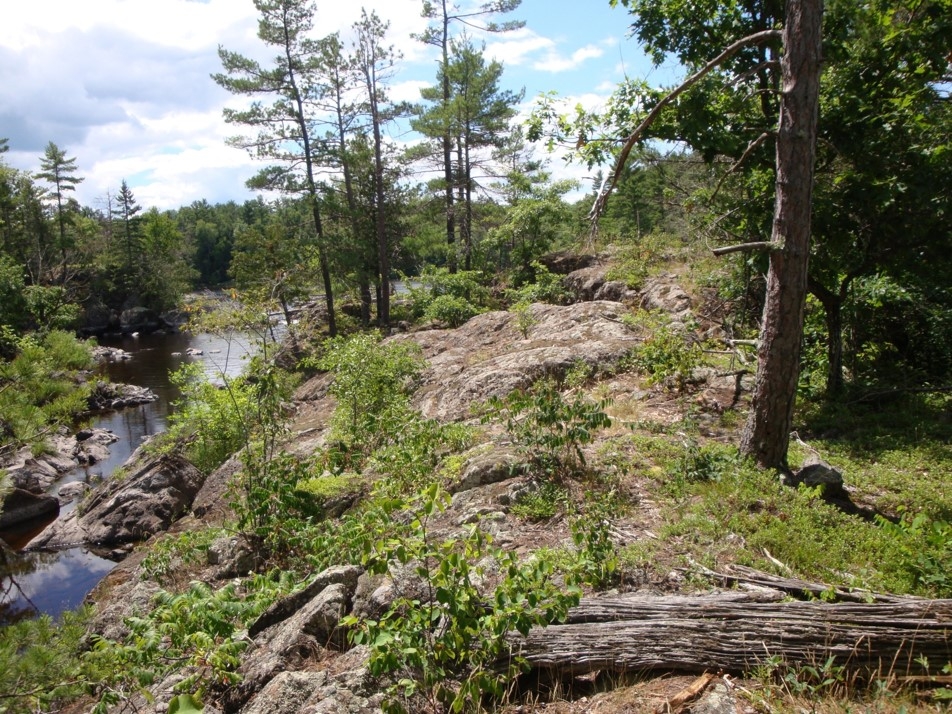Bedrock Glade Group

Bedrock Glades are savanna or open woodland communities that occur on exposed bedrock and thin soils over bedrock. These systems are found primarily in the Upper Peninsula but also occur infrequently in the northeastern Lower Peninsula. Bedrock Glades are characterized by sparse vegetation consisting of scattered and stunted trees, scattered shrubs and shrub thickets, and a partial turf of herbs, grasses, sedges, mosses, and lichens. Canopy cover typically ranges from 10 to 60%. Bedrock types that support Bedrock Glade include limestone, granite, and volcanics. Bedrock Glades are found on flat expanses of limestone or dolomite and steep to stair-stepped slopes, knobs, and exposures of granite and volcanic bedrock. The soils of bedrock glades are shallow, restricted to cracks, crevices, ledges, and depressions, and range from acidic to alkaline depending on the bedrock type. Natural processes that influence species composition and community structure include seasonal patterns of soil saturation and desiccation, extreme winds, ice and snow abrasion, erosion, windthrow, exfoliation of rock slabs, and occasional fires.
Four natural community types fall within the Bedrock Glade group, including limestone bedrock glade, granite bedrock glade, volcanic bedrock glade, and northern bald. Classification of these Bedrock Glade types is based on differences in bedrock composition, species composition, community structure, natural processes, and landscape setting.
Citation
Cohen, J.G., M.A. Kost, B.S. Slaughter, D.A. Albert, J.M. Lincoln, A.P. Kortenhoven, C.M. Wilton, H.D. Enander, and K.M. Korroch. 2020. Michigan Natural Community Classification [web application]. Michigan Natural Features Inventory, Michigan State University Extension, Lansing, Michigan. Available https://mnfi.anr.msu.edu/communities/classification. (Accessed: January 20, 2026).

